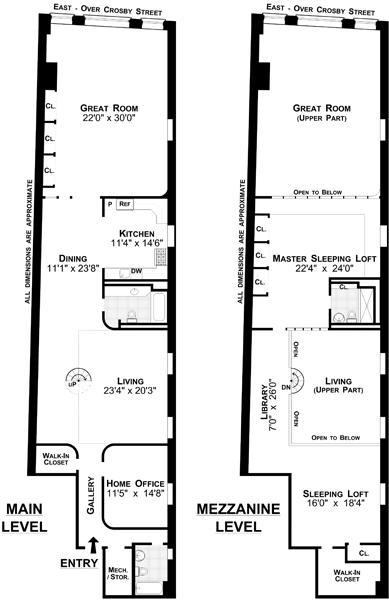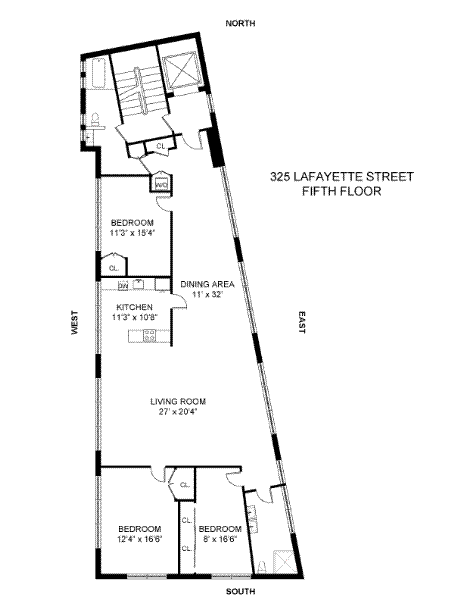When I first moved to New
York, sometime during the Jurassic period, the upper
west side
was not considered desirable. It was thought of as a bit déclassé, maybe
even dangerous.
Over the years
since then, things have definitely
changed.
 |
| The West Side's American Museum of Natural History (New York Magazine) |
Not too long after I arrived,
the New York Times printed an article on the west
side’s emergence. There was a
big cartoon with caricatures of the various celebrities who might be found
standing in line at Zabar’s. Many of them were people I had actually
heard of.
In the late ‘70s and ‘80s, as New York’s quality of life began to improve overall, the area became more desirable. Psychiatrists, concert violinists, magazine writers, Columbia professors and other members of the cultural elite lived there. They drank red wine and voted Democratic.
(I have always been confused
by the location of the FDR drive. Wasn’t Roosevelt a Democrat?
Shouldn’t he be on the west side, like the other Democrats? As a result,
I’m always giving people the wrong directions for getting into the city from
out of town.)
These prewar apartments were
built in the scale and style of the ‘20s, when everybody had lots of children
and sat down to a formal family dinner every night, served by the family’s
live-in housekeeper.
Indeed, the dining rooms are often larger than the
living rooms, and an extra bedroom can be carved out of the window end of
one.
I well remember the first
time I went to a party in one of those West Side sprawlers. I had not since childhood lived in anything larger than 500
square feet.
At this party I remember my eyes travelling across
the 30-foot living room, past the fireplace, across a hall, and then farther on
to the window at the other end of the dining room. And there was
something very relaxing about the trip.
It was then that I discovered the
true luxury of unnecessary space.
 |
| The east side's Metropolitan Museum of Art (kimbriggs.com/photos) |
Today, the balance for very
large apartments has shifted. Those on the west side make those on the east side look like bargains.
At this writing, the average
asking price for a classic seven in a prewar doorman co-op on the upper west side
(between 59th and 110th Streets, between the Hudson River
and Central Park West), is about $4,500,000, with the average maintenance about
$4,000.
Average price for a similar
apartment on the upper east side is a mere $3,250,000, with average maintenance
$4,600.
And it should be noted that all of those currently available east
side classic sevens are in the once super-expensive area west of Lexington and
south of 96th Street, as opposed to
the less chic area from Lexington to the East River.
But for smaller apartments, prices are higher on the east
side.
For a classic five room
prewar doorman co-op apartment--that is, two bedrooms, living room, kitchen and
dining room on the west side--you’ll pay an average of about $1,700,000,
with average maintenance $2,600.
On the east side, the average
price for a five is almost a million dollars higher
at about $2,600,000, average maintenance $4,400.
On the west side, the average
prewar doorman one bedroom co-op will cost about $665,000, average maintenance
is $1,300. On the east side, the numbers are $755,000 and $2,000.
Some other differences
between the east side and the west side: on CPW, you get morning
sun. On Fifth, you get afternoon sun.
On the east side, most
buildings are happy to have you use your apartment as a pied a terre; in fact,
they expect you to have a house in Connecticut, another one in Southampton,
a villa in Tuscany, a castle in Spain, you name it.
But buildings
on the west side, especially those on Central Park West, usually expect you to
live in them, not just visit, which tends to create a family atmosphere.
Co-ops on the west side are
more likely to permit financing than those on the east. A number of
the buildings on Fifth and Park, for example, do not allow financing at
all. Some require a multiple of the price of the apartment in liquid
assets after closing.
In addition to
price differences, there are some other things to consider when choosing
between east and west. The east side has Barney’s, the Metropolitan
Museum of Art and the restaurant Daniel.
The west side has Loehmann’s,
the Museum of Natural History, and Bar Boulud, which is a more casual
version of Daniel. And it has Riverside Park, which has not only the usual
grass and trees but also a river.
To come: post-war and condo apartments on the upper east and west sides.














